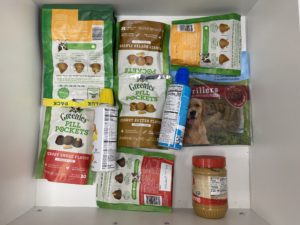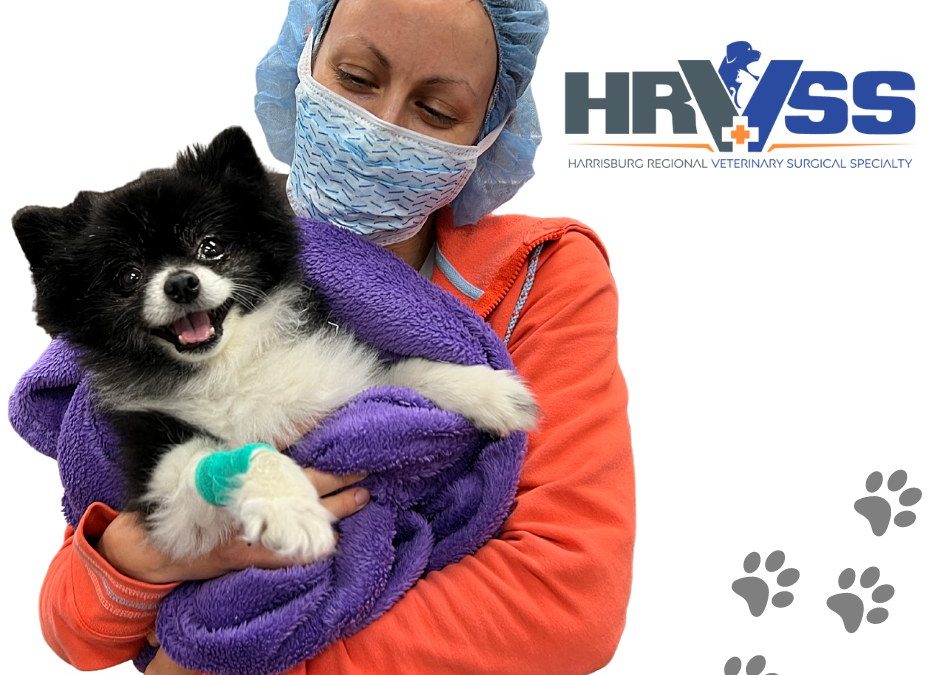It’s hard to deny that anesthesia and surgery are stressful. So we take it very seriously, and we do everything we can to decrease stress in our patients. Here are 5 ways we reduce stress.
1. We recommend preop medications
Our canine patients receive a pain medication, a tranquilizer and an anti-nausea medication the evening of surgery. The morning of, they get a pain medication and a tranquilizer.
Our kitties receive a pain medication and an anti-nausea medication the evening of and a pain medication the morning of surgery.
The goal is to decrease their stress level (and the risk of vomiting) during the car ride and at the hospital.
2. We provide lots of TLC
After all, we work in this field because we love animals.
I routinely catch my nurses huggin’ and kissin’ and lovin’ our patients.
They call them names, like “puppers,” “my baby” and “my love.”
And we certainly all use silly voices when we talk to patients, like you probably do in the privacy of your home…
On every pet’s treatment sheet, we list all of their treatments: when to give antibiotics, when to take their temperature, when to feed them etc.
We also have a specific line that says “TLC.”
We mean it, and we provide it.
Funny story: one day, I was looking for something at the practice, and found a ridiculously large secret stash of treats I didn’t even know existed !!!
True story !!!
Guess who gets treats several times…

3. We use Fear Free principles
Launched in 2016, the Fear Free movement was started to prevent and alleviate fear, anxiety, and stress in pets.
I believe so strongly in these principles, that I became Fear Free certified a few years ago.
This is reflected in multiple things we do.
. Our dog runs are large and have a glass door, not metal bars.
. Manhandling pets in simply not allowed in our practice. If a patient is not cooperating, for whatever reason, we will use sedation to make the interaction stress-free.
. Being cold is a source of stress, so we do everything we can to keep patients warm.
. The colors we chose for the practice walls are considered Fear Free by experts.
4. We are super generous with pain medications
As I always say, “pain is not acceptable.”
Pain is a huge source of stress.
So we make every effort to prevent and treat pain.
This includes:
. pain meds before surgery (at home, see above).
. pain meds delivered in the IV fluids, one drop at a time, before, during and after surgery.
. pain meds injected in a joint or at the surgery site, if applicable.
. pain meds injected around the surgery site, which it numbs for 3 days.
. an anti-inflammatory injected after surgery when appropriate.
. pain meds at home, most commonly an anti-inflammatory and a pain medication (if not 2).
5. We use sedatives at home
Based on an open discussion with the pet owner, if we suspect a patient will have a hard time being confined after surgery, then we can dispense a mild sedative (for the pet, not for the owner !!!).
This is especially true in young, energetic pets.
The goal is not to turn them into zombies, but to take the edge off, so they are more content to be confined.
We realize that being 100% stress-free in 100% of patients is sadly impossible, but we certainly do everything we can to decrease stress in all patients.
If you would like to learn how we can help your pet with low stress surgery and anesthesia, find more info at www.HRVSS.com
Phil Zeltzman, DVM, DACVS, CVJ, Fear Free Certified

